Like music, most people believe that the generation of cars they grew up with was the best ever made. But, objectively speaking, it is much easier to defend some eras than others. And while the jury is still out on the greatness of pre-millennium music, the automotive all-stars that came along from 1990 to 1999 can definitely be considered some of the best ever made.
As most lists of this sort tend to be, the idea of “best” is about as relative as the word “cool” has been for the last half-century. So, in order to avoid some hate mail accusing us of forgetting the one car that one guy happened to love in 1996, we elected to shy away from rankings and instead present this simply in alphabetical order.
Also, for the sake of our sanity, we also made the rule that the ’90s cars on this list needed to either A) have begun production sometime in the 1990s and/or B) have been produced for at least four out of the ten applicable model years (1990-1999). This means that cars like the epically immortal Ferrari F40 and Lamborghini Countach will not be making appearances as they are predominantly thought more of as cars of the 1980s.
Finally, we also made the executive decision that “best” can be applied to many areas of the autoverse, and so each of these cars has stood out for one reason or another and has remained in our minds and hearts for the better part of three decades. Enjoy!
Acura Integra Type-R
Before the furiously fast Toyota Supra’s 2JZ engine became the poster child for import supremacy, the naturally aspirated B18 1.8-liter inline-four found in the Acura Integra Type-R was the top-of-the-line tuner’s choice. With its 195 hp and incredible 8,400 RPM VTEC-assisted redline, the Type-R was a no-frills hardcore racer anyone could love and everyone had to respect.
Acura NSX
Built as the world’s first supercar that could be driven daily (without anxiety anyway), the NSX redefined the supercar standard. With its Pininfarina design and barely 3,000-pound curb weight, the stylish NSX is still lusted after nearly three and a half decades after its debut all the way back in 1990.
BMW 8-Series

After nearly a decade of research and development, BMW’s E31 finally debuted in 1990. Over its nine-year model run, the 8-Series was available with a 282 hp 4.4-liter V-8 all the way up to a Corvette-fighting V-12 that cranked out a very impressive (for the early 1990s) 375 hp, making the E31 a near-perfect combination of style and speed.
BMW E36 M3

While both the E30 and E46 tend to receive copious love from the Bimmer faithful, the E36 is often overlooked by comparison. The 1996 M3 marked the very first occasion a BMW was available with a six-speed manual transmission. While 240 hp may pale in comparison to some more recent Bimmer models, the E36 made its mark as being a more liveable performance car than its rather hardcore predecessor.
Bugatti EB110

Today, Bugatti is synonymous with the one percent, but back in the ’90s the upstart French company came along with its oddly evocative EB110. Naysayers were quickly quieted upon hearing of the EB110’s quad-turbo V-12 that made up to 603 hp in Super Sport trim.
Chevrolet Corvette Grand Sport
Despite only being around for the 1996 model year, the Grand Sport sent the fourth generation of the Corvette out with a bang. Utilizing an LT4 small-block V-8, the Grand Sport was only made in Le Mans Blue with a single white racing stripe and red hash marks over the driver’s side front fender. Out of the 1,000 Grand Sports made, just 190 of those were drop tops, all but guaranteeing this car to be a collectible fan favorite.
Chevrolet Corvette ZR-1

While the fifth generation of Corvette debuted in 1997, it wasn’t until the Z06 came along that true enthusiasts began to let go of the ZR-1 as the pinnacle of Corvette performance. With its Lotus-designed Mercury Marine but LT-5 small block V-8, the ZR-1 pumped out a Viper-fighting 405 hp while still managing to be civilized enough to drive every day.
Dodge Viper
Arguably the most visually evocative American car built since the mighty Shelby Cobra, the no-nonsense Dodge Viper doled out punishment like a Navy Seal drill instructor on wheels to smug Ferrari drivers as well as anyone who jumped behind the wheel with more confidence than skill. Its massive 488 cubic-inch V-10 engine pumped out no less than 400 hp throughout the course of its first generation.
Ferrari F355

Heralded as the first ‘modern’ Ferrari, the F355 did away with the temperamental nature of its predecessors. The 355 F1 also debuted the first production car appearance of a paddle-shifted automated single-clutch manual courtesy of the trickle-down effect of Ferrari’s Formula One team. If you have never heard an F355 screaming at its spine-tingling 8,500 rpm redline, add it to your bucket list. Now.
Ferrari F50
In what we consider ‘the most underrated Ferrari ever,’ the mighty F50 is finally starting to get some of the respect it deserves nearly thirty years later. With 512 hp on tap from its naturally aspirated V-12, the F50 also offered an open-air driving experience (150 mph feels much different with no roof), as well as the ability to shift your own gears through a traditional six-speed manual transmission. It took some time, but with that combination of features, it’s hard to believe we ever doubted this halo car.
GMC Syclone

While only made for the 1991 model year, the Syclone was a collaborative effort by GMC and Production Automotive Servies (PAS). Based on the rather vanilla GMC Sonoma, the Syclone added whipped cream, sprinkles, and a turbocharged 4.3-liter V-6 cherry of an engine that pumped out an underrated 280 hp and funneled that power through all four wheels for maximum traction, making this diminutive dynamo a nightmare for unsuspecting Ferrari owners.
GMC Typhoon
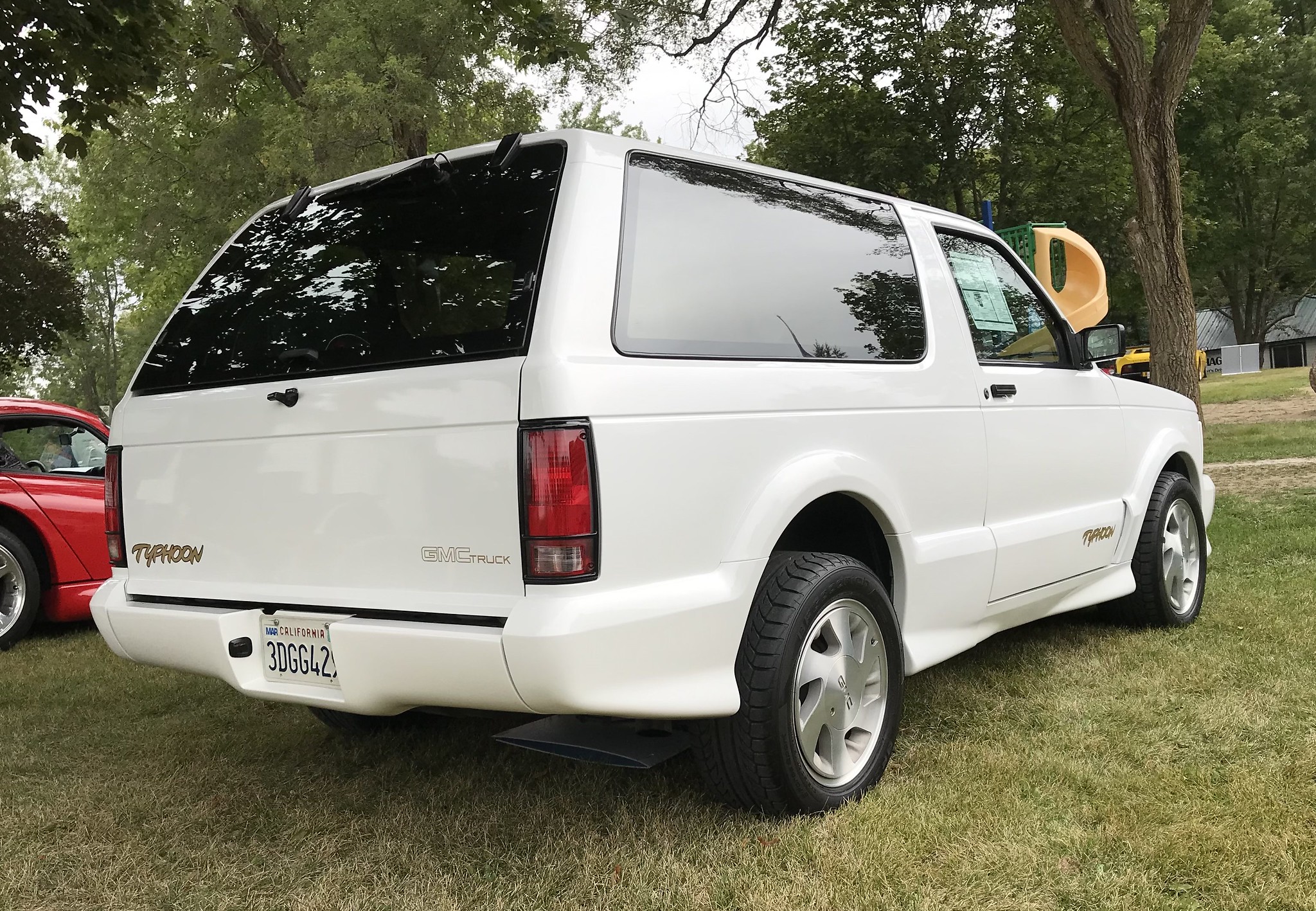
Essentially a Syclone with a covered rear section, the Typhoon was decades ahead of its time. The idea of a speedy SUV in the early 1990s seemed about as practical as pushing phone keys to send messages instead of calling. Yet, both of those ideas have proliferated beyond anyone’s wildest dreams, and the idea of muscle trucks can be credited to the brief but impactful GMC Typhoon.
Jaguar XJ220

Ironically, Jaguar’s first (and only to date) supercar could have been viewed as a failure despite being the fastest car in the world for a period of time. The ‘220’ in XJ220 referred to the expected and predicted top speed of the company’s halo car. While capable of only hitting 212.3 mph when tested as a production car, the XJ220 still wowed onlookers with its (then) unconventional 3.5-liter twin-turbo V-6, which produced a whopping 542 hp.
Lamborghini Diablo
In what might be the best sequel since The Godfather II, the Lamborghini had big tires to fill. Replacing the celestial and transcendent Countach seemed a near-impossible task, yet the Diablo managed to check all the boxes Countach faithful could have asked for in a successor. More power (492 hp to start), a sleek shape that looked like an evolved version of the car it replaced, scissor doors, and a name that was much easier to understand and pronounce made this Lambo a fantastic follow-up.
Lexus SC400
Though the same shape was also available in the SC300 model, the SC400 offered a sleek style with a smooth and sultry aluminum block and heads 4.0-liter V-8 that produced 250 hp and allowed Toyota’s luxury sport coupe to become a bonafide grand tourer.
Mazda MX-5 Miata

While the MX-5 Miata never blew anyone’s doors off at the track (in stock form anyway), the sporty Mazda has quietly carved out one of the longest tenures in the autoverse thanks to its tossable fun-loving chassis, slick-shifting manual transmission and open-air driving experience that rivals peanut butter and chocolate in terms of best combinations is history.
Mazda RX-7 Turbo
The sleek third-gen RX-7 has been a fan favorite since it ended production in the States in 1995. Powered by a unique twin-turbo, twin-rotor Wankel engine, the perfectly balanced (50/50 front/rear) RX-7 embodied everything we love about sports cars.
McLaren F1
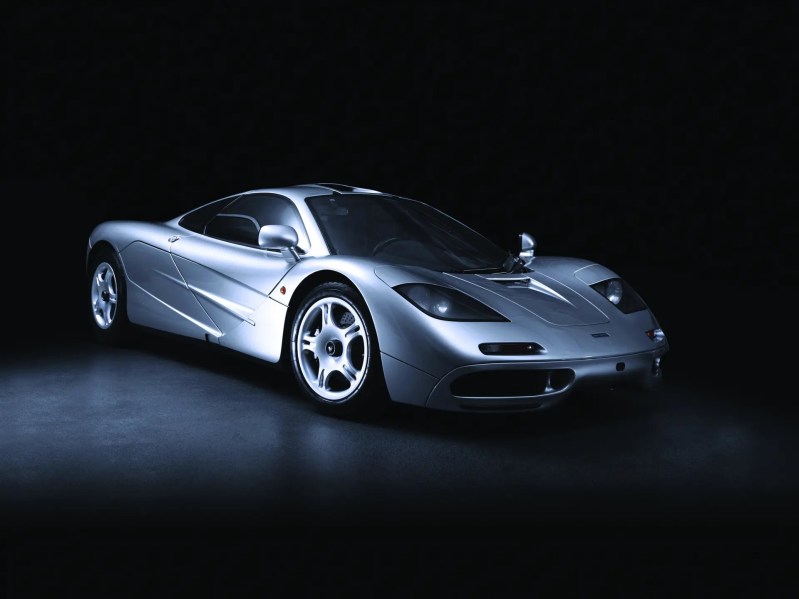
We said we weren’t ranking these cars, but if we had, the clearcut top dog is the McLaren F1. That’s it. There is no debate. While many will point to various Bugattis, the F1 actually still holds the production car top speed record for naturally aspirated vehicles, whereas those French supercars needed four turbochargers and four more cylinders to eclipse the McLaren’s BMW-built 6.0-liter V-12. That powerhouse motor put out a staggering 627 hp and allowed the 2,509-pound to hit 240.1 mph and simultaneously become the world’s first hypercar.
Mitsubishi 3000GT VR-4

Unlike some of the other 1990s cars, the 3000GT’s style has stood the test of time. With up to 320 hp and a slew of technology like all-wheel drive, all-wheel steering, and Active Aero, the 3KGT was one of the grandest tourers you could own from 1990 to 1999.
Nissan 300ZX Twin Turbo
With a twin-turbo 3.0-liter V-6, the 300ZX utilized the same engine setup as the 3KGT and Supra. But, the Z managed to stand out from the pack with its distinct shape, available t-tops, and luxurious interior. Of course, 300 hp and all-wheel drive didn’t hurt either.
Nissan Skyline

Although it was never officially allowed in the States as a showroom car in dealerships, that fact only added to the myth and legend of the Skyline GT-R. With a 2.6-liter twin-turbo inline-six, it managed to produce only 276 hp on paper, which just so happened to be the handshake deal Japanese manufacturers agreed on as the limit for sports cars’ horsepower limits. Yet, strangely, rumors persist that the real number was around a hundred ponies higher.
Plymouth Prowler
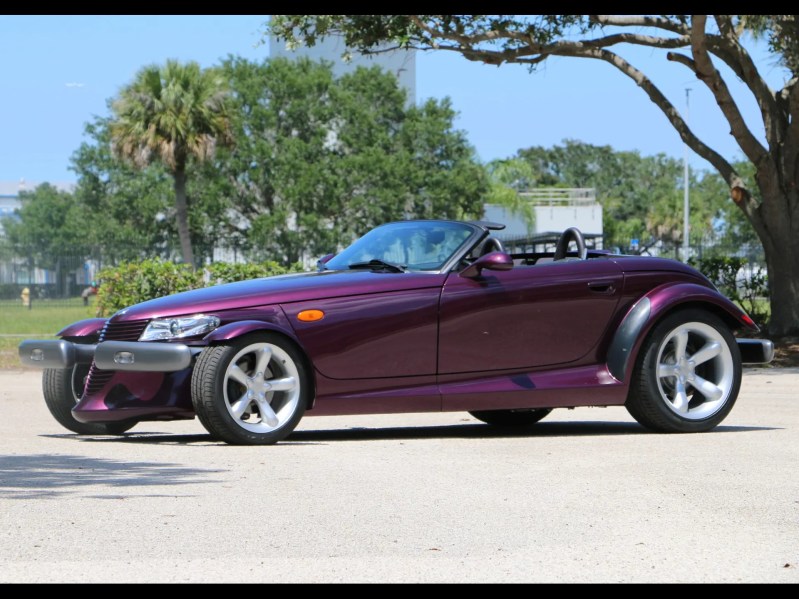
Despite having a technologically advanced, nearly all-aluminum suspension, the Plymouth Prowler disappointed many with its parts bin 253 hp V-6 and four-speed automatic transmission. Yet Chrysler’s ability to create something as radical-looking as this neo-hot rod is still an incredible achievement. It remains a head-turner wherever it goes to this day.
Pontiac Trans Am WS6
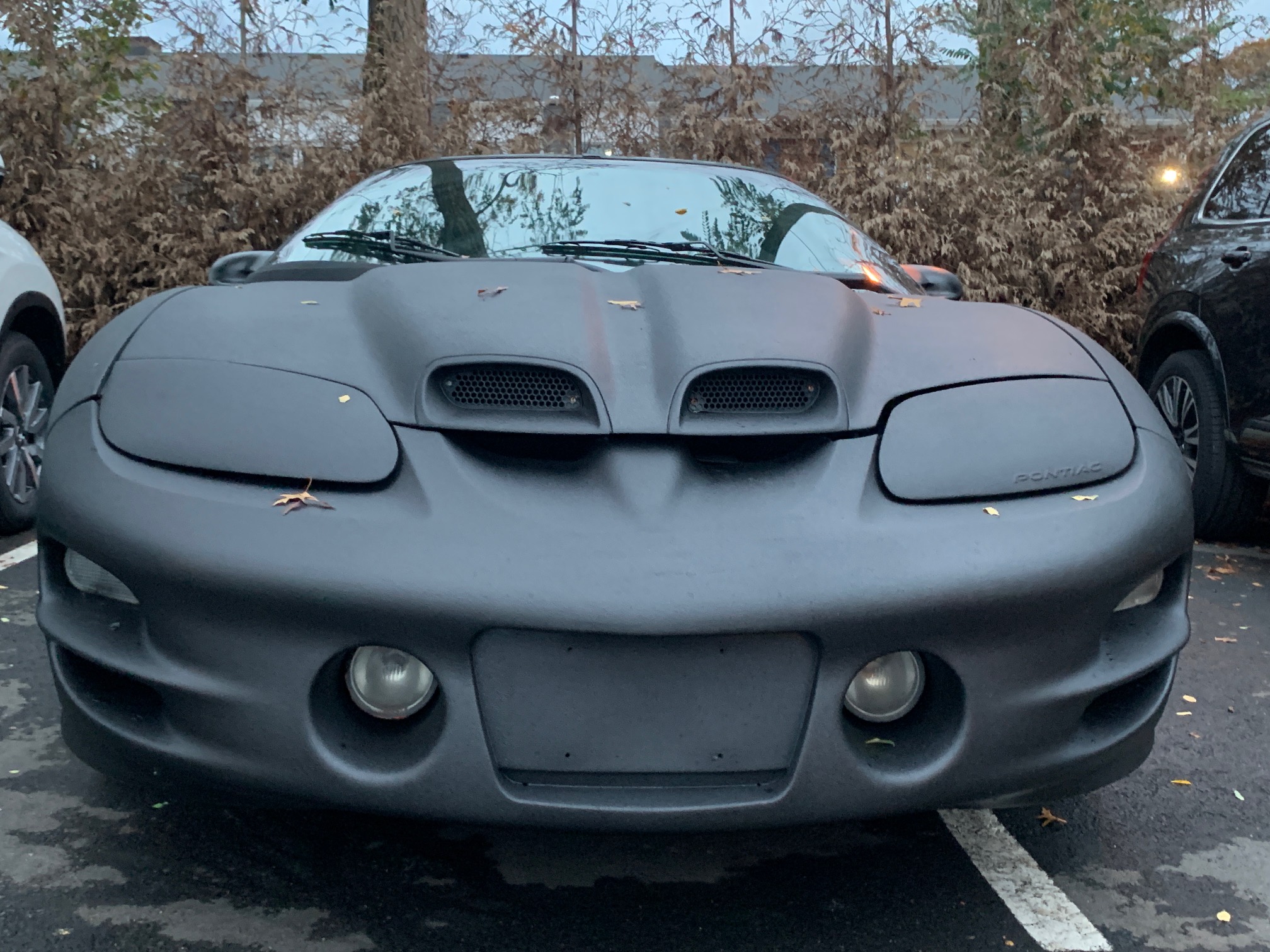
Say what you want about Smokey and the Bandit or Knight Rider, but when the WS6 debuted in 1993 and then got a facelift in 1998, the top-tier Pontiac Trans Am instantly became a contender for the most aggressive design in all of the autoverse. That menacing Ram Air snout combined with (up to) 325 hp under the hood meant owning this car granted owners access to the most visual and aural drama for the buck ever made.
Porsche 911 Turbo S
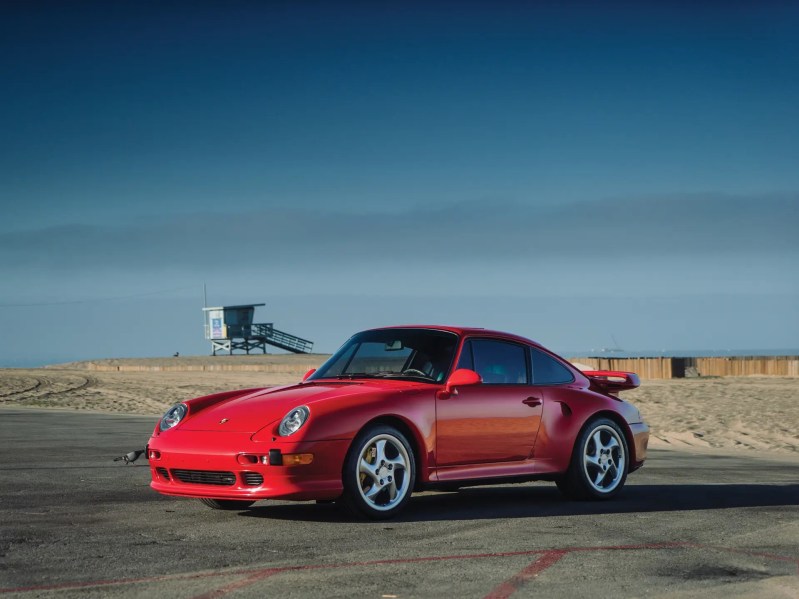
There is an argument that the 1997 Porsche Turbo S might be in the ‘best-ever’ conversation. Being the last of the air-cooled 993 911 models, the S churned out a silly 424 hp from its turbocharged 3.6-liter flat-6, which was funneled through a true six-speed manual and onto all four wheels, making this Porsche not only wickedly fast, but also instantly collectible.
Porsche Boxster

Much like the Mazda MX-5 Miata, the Porsche Boxster didn’t make a name for itself by blowing its competition out of the water, on the track anyway. What naysayers called “The poor man’s Porsche” has gone on to become one of the most beloved true driver’s cars on the planet.
Ruf CTR Yellowbird

Although limited in production, the Yellowbird was the automotive equivalent of Cindy Crawford when it came to car magazine covers. With an underrated 463 hp coming from its twin-turbo flat-6, combined with its barely 2,500-pound curb weight, the CTR rivaled even the legendary 959 for Porsche supremacy.
Saleen S351
Steve Saleen first made a name for himself in the racing circuit and eventually created his very own supercar called the S7. In between those two things, however, were his modified Mustangs. The S281 was the more popular, and not coincidentally cheaper, of the two, but the real beast was his S351. At its peak, this SN95 modded Mustang was powered by a blown iron-block 351-cubic inch V-8, which routed all 495 horsepower through a six-speed transmission and allowed the S351 to liquify its tires with just a stab of the throttle.
Shelby Series 1
Though many look at Carroll Shelby’s second attempt at a two-seat muscle car as a failure, the Series 1 stands out wherever it goes. Debuting in 1997 but then not going on sale until 1998 as a 1999 model, the Series 1 just barely snuck onto our list. Debuting with a naturally aspirated 4.0-liter Aurora V-8, the Series 1 began with 320 hp and then upped the ante to a much more fun 450 hp later in life. It’s hard to call any two-seat sports car with nearly 500 hp a failure.
Toyota Supra Turbo
The undisputed king of the 1990s imports, the Supra Turbo has attained mythical status thanks not only to its movie screen stardom but its 2Jz inline-six-cylinder engine, whose bottom end was capable of handling upwards of 800 hp before any modifications were needed. If there is any doubt as to why the Supra has become a thing of legend, there are plenty of videos out there of single-turbo converted Supras that have smoked cars costing exponentially more, proof that sometimes a car can live up to its hype.
Vector W8
With only 22 units ever produced, spotting a Vector W8 on the road is like seeing a unicorn with four rabbit’s feet for hooves wearing a crown of four-leafed clovers. With an aluminum honeycomb monocoque tub covered in carbon fiber and Kevlar, it’s no wonder Tesla hasn’t tried to resurrect this brand and make a sequel to Back to the Future.
Vector M12
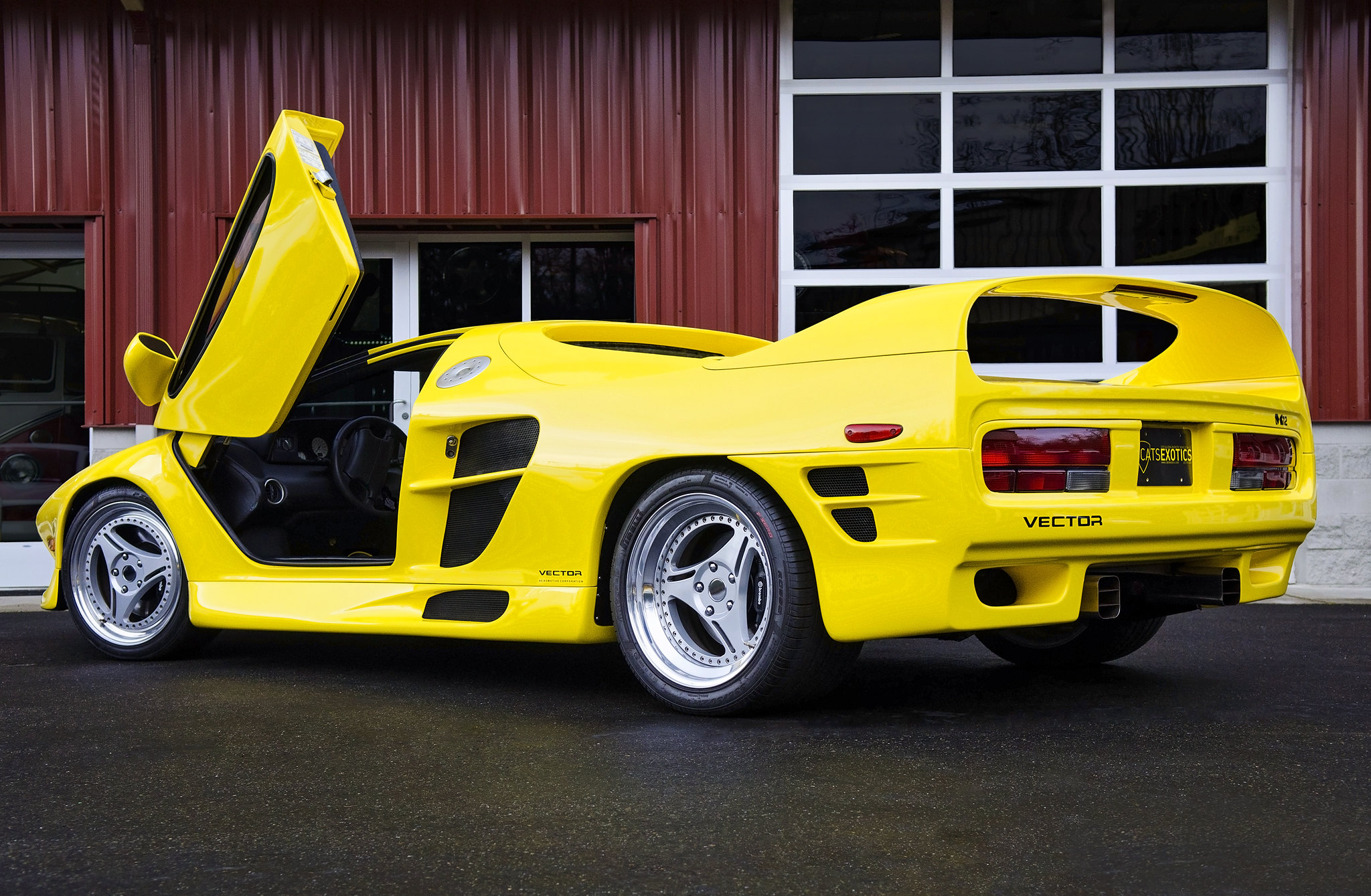
The last entrant into our 1990s list is the even-more-rare Vector. With only 17 produced (including prototypes), the M12 utilized the same 5.7-liter V-12 found in the aforementioned Lamborghini Diablo. Though it received more jeers than cheers from automotive journalists, the one thing we could all agree on is that, if nothing else, the (then) near-200K Vector M12 stood out in a parking lot.

















